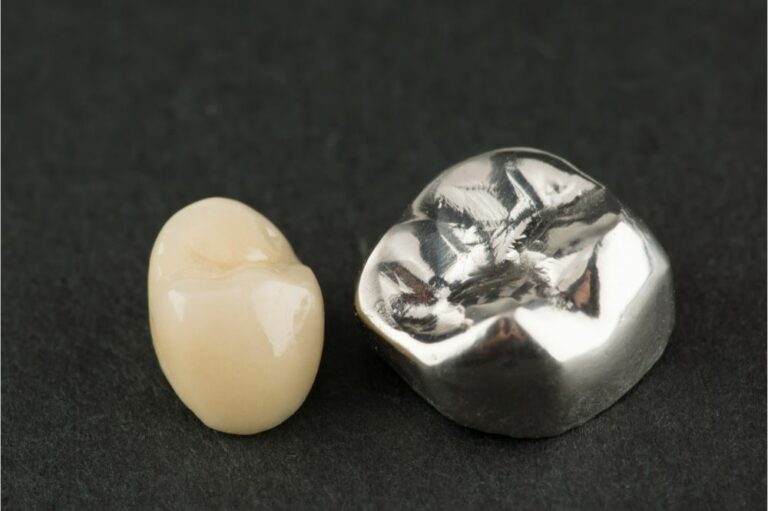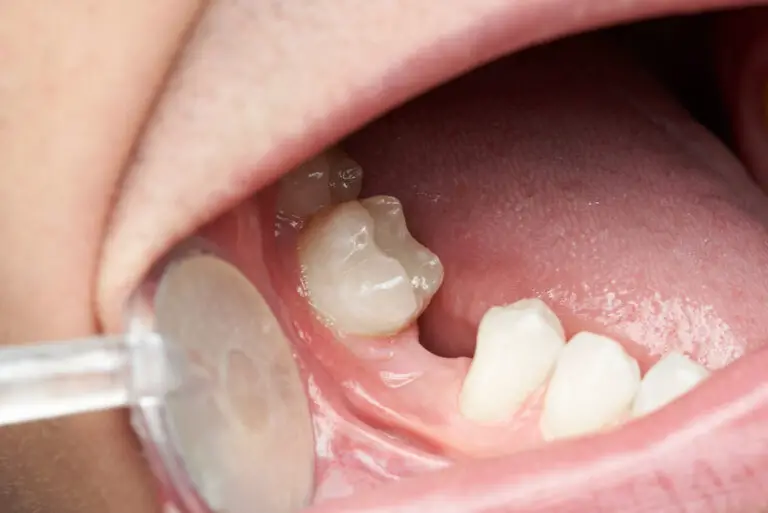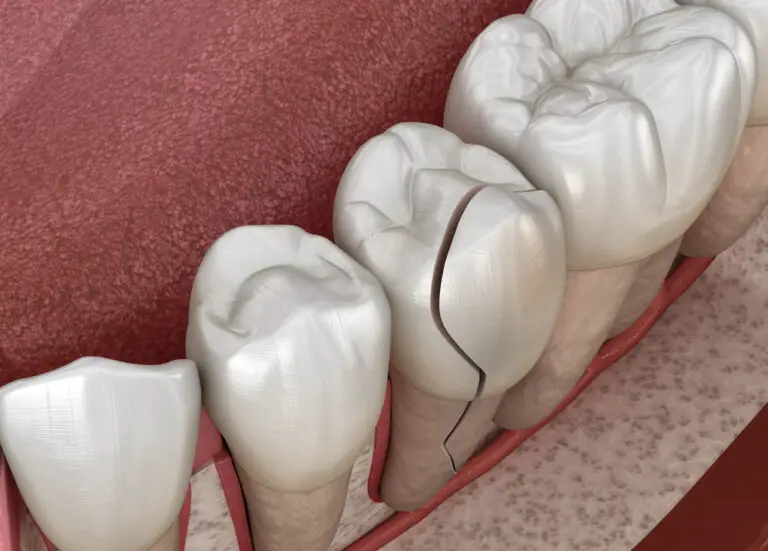Dental scaling is a form of dental cleaning of the teeth that’s not dissimilar to the basic type of cleaning most people are familiar with – at least not in principle. It’s also known as deep cleaning and, as the name implies, it’s a type of cleaning that goes quite a bit deeper than normal teeth cleaning – as in deep beneath the gum line.
What does this mean exactly, however? How does a dental hygienist manage to get underneath your gums and what does this entail? To find out, let’s dig into what is dental scaling, how it works, why should you do it, and more.
What is Dental Scaling?
As with standard dental cleaning procedures, dental scaling is simply a process that removes plaque from our teeth and gumline. It is significantly more intensive, however, which is why a lot of people don’t like to do it.
Sadly, that’s also why it often needs to be done – because standard dental cleaning is usually done for mostly cosmetic purposes and doesn’t have enough health benefits, at least not compared to dental scaling.
So, unlike normal teeth cleaning which only scrapes the plaque buildup from the top and front parts of our teeth, this deeper scaling process does so much more comprehensively and in the parts of our teeth and gums that tend to need it the most.
To achieve that, your dentist will typically use one of two tools or both. These are:
- A simple handheld dental scaler, the likes of which have been used in dentistry for decades. This metal tool has a thin hooked end that the dentist simply scrapes on the surface of your teeth to get the tartar buildup off. This tool is also known as a curette.
- Alternatively, your dentist can use a more modern ultrasonic instrument with a vibrating metal tip and a built-in water spray. As you’d suspect, this tool functions by the vibrating tool chipping away small pieces of the plaque while the water spray is washing them away.
Some dentists prefer the older curette and simply use a separate water spray tool while other dentists prefer the newer ultrasonic device. Both tools function on the same principle, however, and it’s more important how good the dentist is rather than what tool he or she is using.
Why is Dental Scaling Done?

The health benefits of a deep dental cleaning or dental scaling are well-known and indisputable. The big two can be summarized as such:
- Preventing or treating gum disease. Periodontitis is a major problem for a lot of people and dental scaling is one of the best ways to deal with or prevent this periodontal disease. Especially if you have chronic periodontal disease, dental scaling is something you’d want to do quite often.
- Preventing the spread of bacteria under or around your gums in a way that mere brushing, quality mouthwashes, or even regular floss use just can’t accomplish. If left unchecked, such bacteria can quickly lead to inflammation and many other subsequent problems ranging from a nasty bone infection all the way to tooth decay and tooth loss.
Overall, the benefits of teeth scaling to our oral health are clear, but the discomfort during the procedure is undeniable too. Regular dental cleanings alone are uncomfortable for a lot of people but outright digging into “pockets” under your gum tissue? Is this as painful as it sounds?
Does dental scaling hurt?
In a word – yes. Exactly how much dental scaling hurts tends to depend on the individual person, as well as how good the dentist is. People with gum sensitivity tend to experience a lot more pain than others and, unfortunately, the latter are the ones that often need dental scaling much more because of their gum issues.
Which dentist’s office you choose to visit is a factor too, of course – some dentists aren’t as good with the scaler as others and can cause much more pain and bleeding. Yet, don’t rush to blame your dentist as even the best professional will certainly cause at least a bit of pain and discomfort.
Fortunately, a local anesthetic is always available to alleviate the pain and most dentists will recommend that right away. Of course, that contributes to the overall cost of the procedure but that’s the price of good oral health.
How much does dental scaling cost?
In the US, deep dental cleanings usually cost somewhere between $150 to $300 – substantially more than the $75-$200 for regular dental cleanings, especially if you have to go two or more times a year. Fortunately, dental scaling is included in most dental plans so you can offset a major part or all of the costs that way.
Are there risks of dental scaling?
While it is uncomfortable and painful, dental scaling isn’t really all that invasive of a dental procedure. Yes, it’s more intensive than regular dental cleanings but it’s nowhere near as invasive as many other dental procedures and surgeries.
Yet, as with any other procedure, dental cleaning does have its risks. It does go below your gum line, after all, and it can cause bleedings. So, depending on your overall health, on how well you maintain your oral hygiene after the procedure, and on sheer luck, dental scaling can lead to an infection.
If that happens, your dentist will likely prescribe antibiotics and/or a special mouthwash. In fact, they will likely prescribe those ahead of time just in case. So, if push comes to shove, you may need to take antibiotics and a different mouthwash for a few days but that’s nothing compared to the things the dental scaling saves you down the line.
What is The Step-by-Step Process of Dental Scaling?
As with many other serious dental procedures, dental scaling is rarely something you can get done in a single visit. It’s not impossible to do so, especially if you don’t have a full-blown gum disease to deal with and if your dentist’s schedule isn’t too packed.
However, most dentists tend to separate the whole procedure into several separate sessions both for your comfort and for their convenience. Here’s how it usually works.
1. Initial exam
Unless you’ve talked with your dentist ahead of time and/or this is something you do with them regularly, you will have to go to an initial exam. This may or may not include the first part of the scaling process, depending on your dentist’s schedule, how severe the issue is, and how thoroughly you’ve talked it over on the phone before the exam.
Regardless, that first step of the process is pretty straightforward – the dentist will take a look at your overall oral situation and the plaque buildup in particular and will determine exactly how you should proceed.
2. Applying anesthetic
When the dentist is ready to start the dental scaling process, they’ll first offer to give you a local anesthetic. This is generally recommended even if you don’t have overly sensitive gums but is especially crucial if you do. The anesthetic is there not just to spare you the pain but to make the whole process much easier, smoother, more efficient, and faster overall as you won’t be twitching and moving as much if you’re not in pain.
3. Dental scaling
Once the local anesthetic kicks in, the dentist will go on with the procedure and start scaling your teeth one by one with their tool of choice. Most dentists will usually do this part in four separate sessions and over four separate days. They’ll essentially divide their work into quadrants – one day for the upper left teeth, one for the upper right, and so on.
Other dentists may do this in two sessions, dividing your teeth into two halves. Some may decide to do it all at once, sometimes even on the same day as the initial exam. This can be doable if the situation isn’t as bad and/or if the dentist has a lot of free time but it’s generally quite labor-intensive and tiresome for both the dentist and the patient.
4. Root planing
This is the second and toughest part of the dental scaling – the scaling or planing of the upper parts of your teeth’s roots. This usually isn’t done on a separate visit and the dentist will do the root planing of each quadrant of teeth after they do the dental scaling. It is a different part of the procedure, however, hence why we mention it separately.
5. Routine check-up
After the dental scaling is complete, your dentist may ask you to come to a routine-check up after a while if you have issues with gum disease. This check-up will be to see how you’ve progressed, whether there are any issues from the scaling such as infection or swelling, and to see if there is any need for additional treatments. If the scaling was just a routine preventative procedure, however, this step may not be necessary.
In Conclusion
Dental scaling is an annoying and often painful procedure, especially if you decide to opt out of the anesthetics for some reason. It can also cost a few hundred dollars a year if you don’t have insurance and it comes with a minor risk of infection that may necessitate antibiotics.
All this tends to be worth it to keep your teeth and gums healthy, however, as dental scaling is – by far – the best way to clean tartar buildup off your teeth, roots, and gums.






